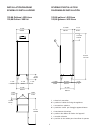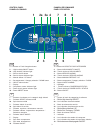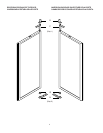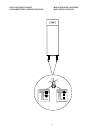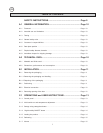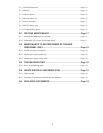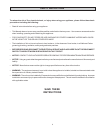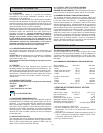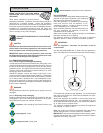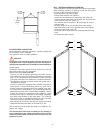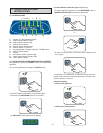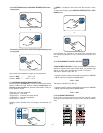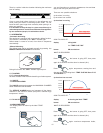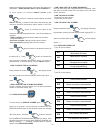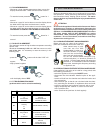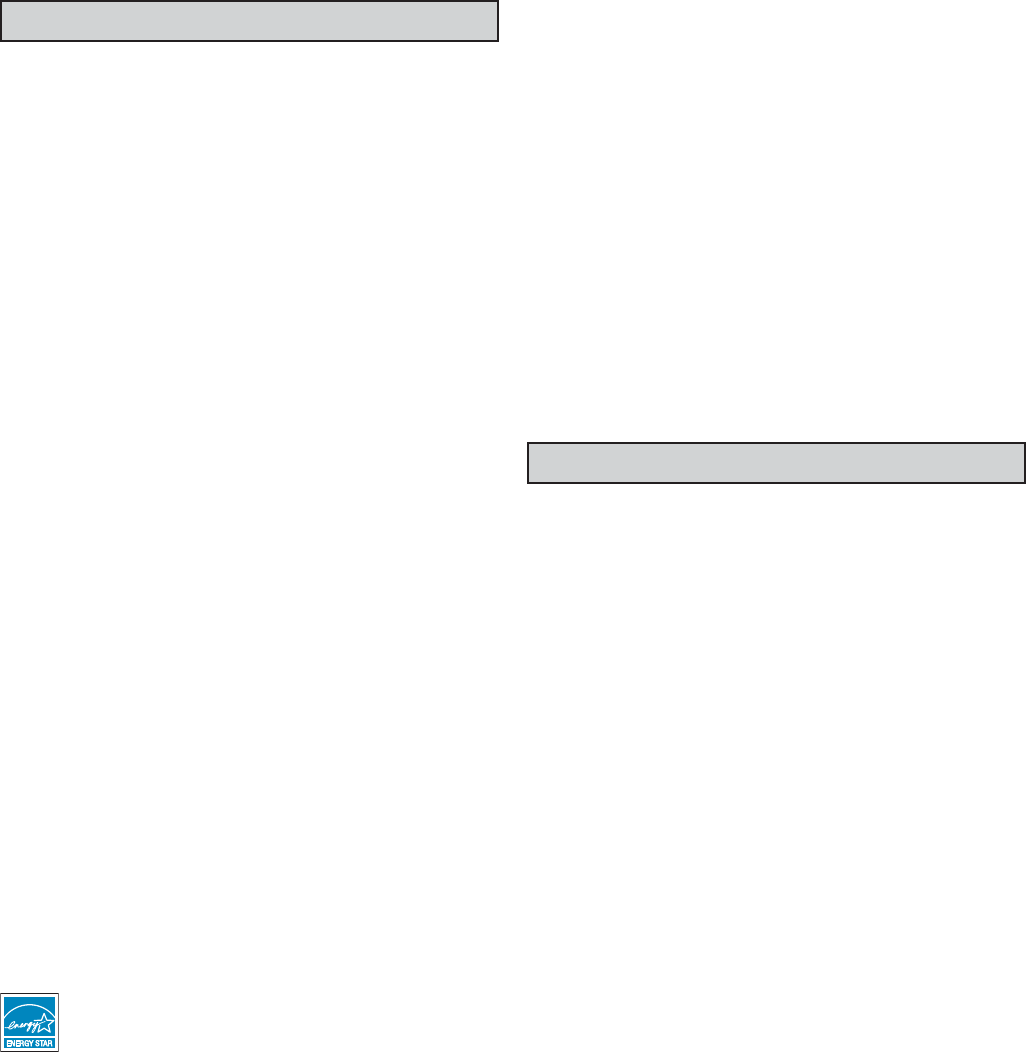
10
A.1.1 FOREWORD
The purpose of this manual is to provide the necessary
information for the correct installation, operation, use and
maintenance of the appliance.
Consequently, the manual and all the technical documentation
enclosed with the appliance must be kept with the appliance at
all times so that they can be consulted by the technician or end
user. It is important to inform the appliance user about regulations
concerning safety during and after installation.
Read the instructions in the manual carefully before carrying out
any operation whatsoever on the appliance, as they give important
information about the standards and rules governing its
installation and safe use. Improper installation, adjustment,
alteration, service or maintenance can cause property
damage, injury or death. Failure to observe the instructions
in this manual when carrying out any operations on the
appliance will relieve the manufacturer of all liability. Also, the
manufacturer declines any responsibility in the event of
problems caused by the use of non-original spare parts.
No part of this of this manual may be reproduced.
A.1.2 INTENDED USE AND LIMITATIONS
This appliance has been designed for the refrigeration and
preservation of foodstuffs. Any other use is to be considered
improper.
ATTENTION: these appliances are not suitable for installation
outdoors and/or in environments subject to natural elements
(rain, direct sunlight, etc.).
The manufacturer declines all liability for any improper use of
the product.
A.1.3 TESTING
Our appliances have been designed and optimised with
laboratory testing to give high performance and efficiency. The
product has gone through 100% testing and is ready for use.
The certificates guaranteeing that the tests (visual inspection -
electrical test - functional test) have been passed are included
with the appliance and are included in specific enclosures.
(section D.5).
A.1.4 GENERAL SAFETY RULES
The appliance is manufactured in compliance with following
directives:
- Hygiene: ANSI / NSF 7
- Safety: UL 471
- CAN / CSA C22.2 No.120 - M91
For model PR43RE1FEU.
A.1.5 CUSTOMER’S RESPONSIBILITIES
A fused disconnect switch or a main circuit breaker (customer
furnished) MUST be installed in the electric supply line for the
appliance. It is recommended that this switch/circuit breaker
have lockout/tagout capability. Before making any electrical
connections to this appliance, check that the power supply is
adequate for the voltage, amperage, and phase requirements
on the rating plate. The customer also must provide a grounded
electrical line cord of suitable capacity for the input specified
on the data plate.
A.1.6 DATA PLATE POSITION
The data plate with all the appliance specifications is located
on the refrigeration unit compartment at the top right hand side.
There is also a plate bearing the appliance’s PNC code and
serial number located underneath the logo.
A.1.7 PHYSICAL SAFETY FEATURES, HAZARDS
The appliance has no sharp or projecting parts.
DANGER! DO NOT REMOVE. There are guards on the units to
prevent access to components which require air movement.
A 1.8 IMMEDIATE INSPECT FOR SHIPPING DAMAGE
The container should be examined for damage before and
during unloading. The freight carrier has assumed responsibility
for its safe transit and delivery. If damaged equipment is
received, either apparent or concealed, a claim must be made
with the delivering carrier. Apparent damage or loss must be
noted on the freight bill at the time of delivery. The freight bill must
then be signed by the carrier representative (Driver). If the bill
is not signed, the carrier may refuse the claim. The supplier can
supply the necessary forms. A request for inspection must be
made to the carrier within 15 days if there is concealed damage
or loss that is not apparent until after the equipment is uncrated.
The carrier should arrange an inspection. Be certain to hold all
contents plus all packing material. Under no circumstances
should a damaged appliance be returned to the manufacturer
without prior notice and written authorization.
A.2.1 MATERIALS AND FLUIDS USED
All areas designed to come into contact with food are in steel
or covered in non-toxic plastic material. An HFC refrigerant, in
compliance with current legal standards, is used in the refrig-
erating units. The type of refrigerant gas used is stated on the
data plate.
A.2.2 DIMENSIONS, PERFORMANCE AND CONSUMPTION
Gross capacity 105.67gal. 400 Iiters
External dimensions:
- Width 23.62” 600mm
- Depth with door closed 26.18” 665mm
- Depth with door open 47.24” 1200mm
- Height 83.15” 2112mm
Chamber dimensions:
- Width 21.26” 540mm
- Depth 21.65” 550mm
- Height 58.42” 1484mm
Shelf dimensions 20.87”x15.75” 530x400mm
- VERSIONS WITH POWER SUPPLY VOLTAGE
120V/1ph/60Hz
Internal temp. range 35.6°F/50°F +2°C/+10°C
Max. ambient temp. +109.4°F +43°C
Current input (°) 5 A
Refrigerant charge R134a 0.617lbs 280 gr
Refrigerant capacity (R134a) (¹) 260 W
Refrigerant capacity (R134a) (²) 556 W
No. and type of defrostings (*) max each 18h x max 30‘
(°) At room temperature 104°F/40°C.
(¹) At room temperature +95°F/+35°C, condensation
temperature 131°F/+55°C and evaporation temperature
14°F/-10°C.
(²) ASHRAE PERFORMANCE ambient temperature 89.6°F/
+32°C, condensation temperature 129.92°F/+54.4°C and
evaporation temperature 44.96°F/+7.2°C.
(*)Auto (by electronic board)
A.1 GENERAL INFORMATION
A.2 TECHNICAL DATA



